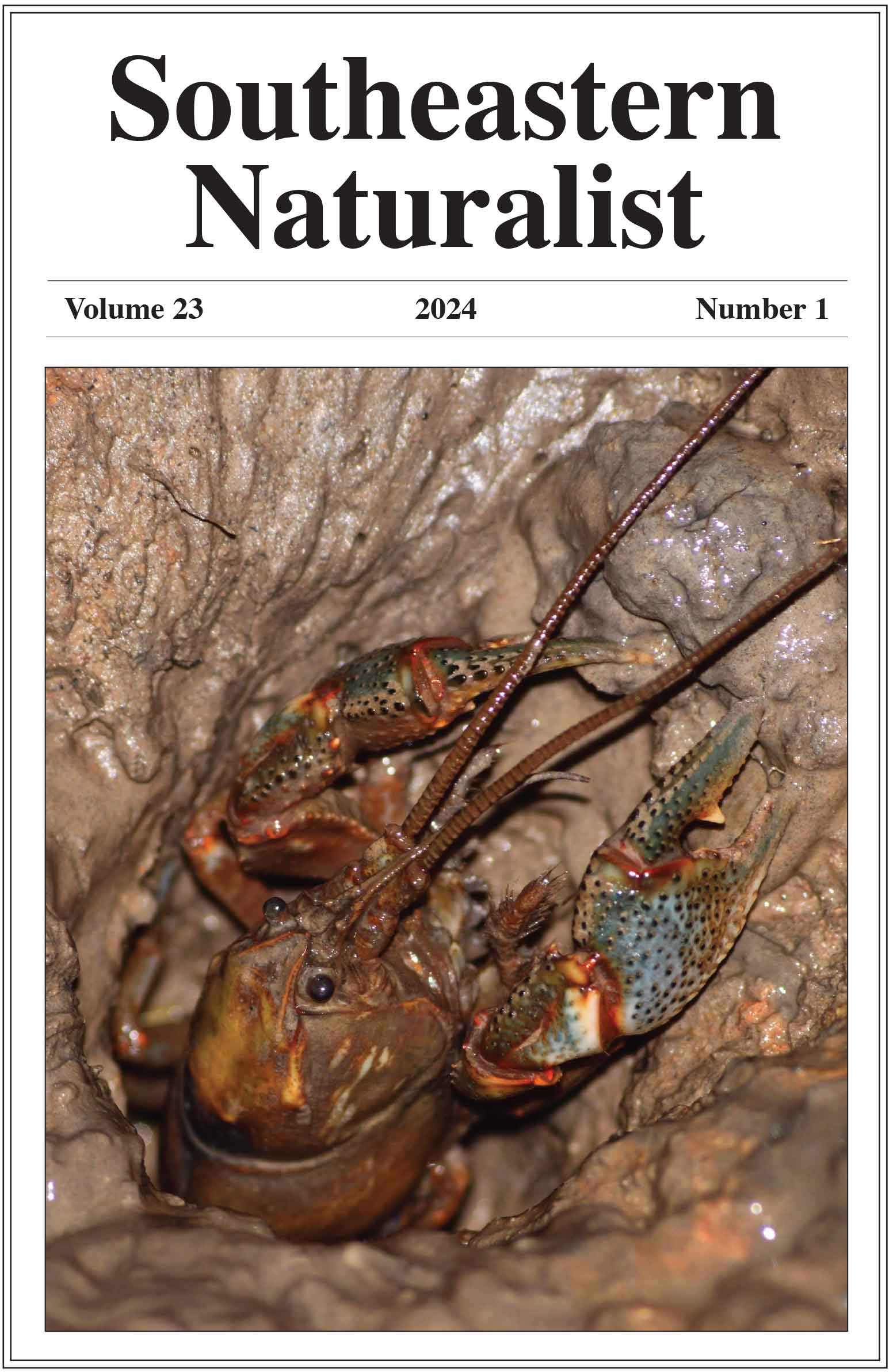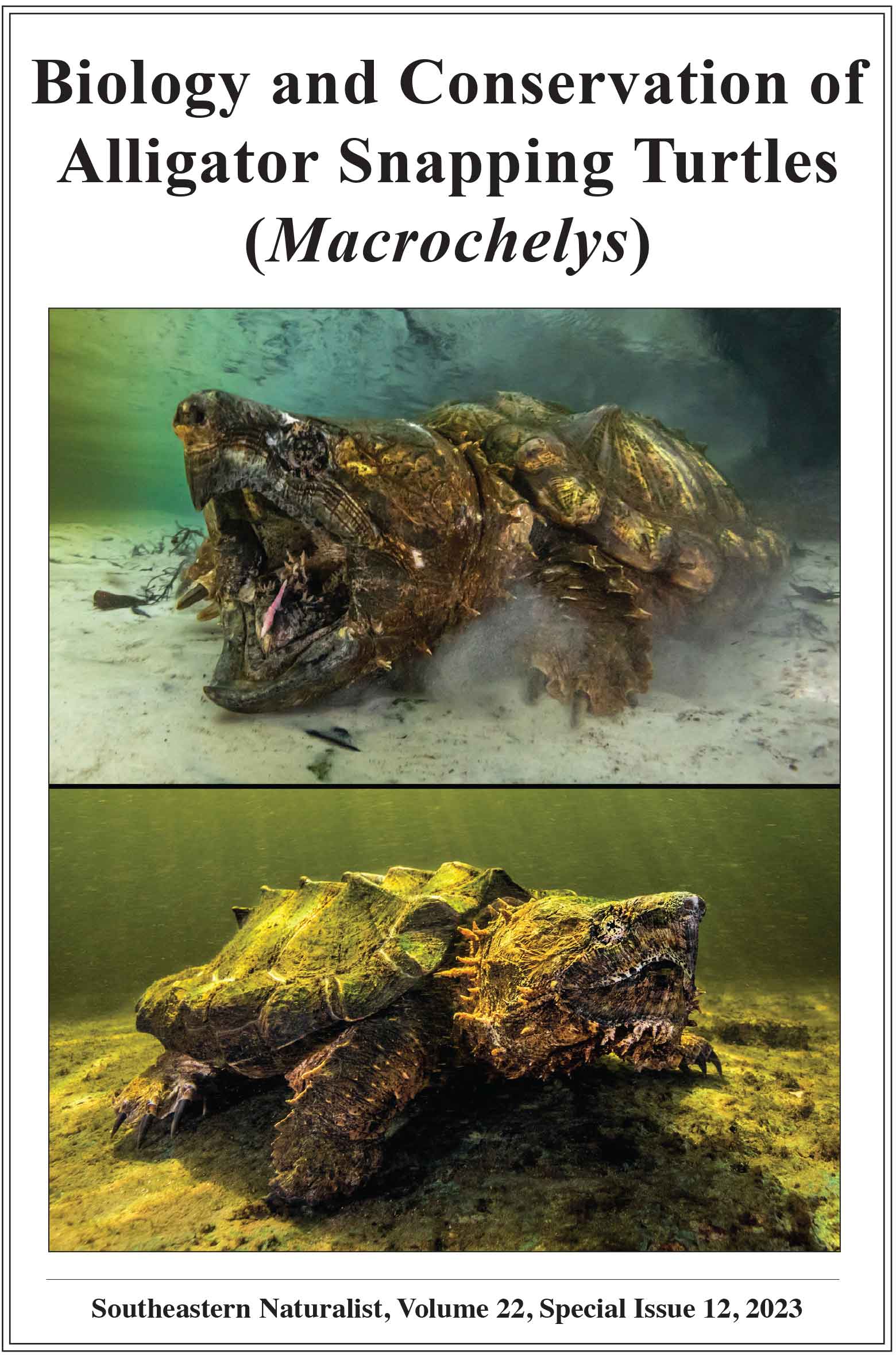Influence of Soil Saturation on Survival and Growth of Bottomland Oaks Six and Fourteen Years After Planting
David C. Mercker1,*, Michael H. Schiebout2, Joshua S. Bowden2, and James R. Kerfoot Jr.2
1West Tennessee AgResearch and Education Center, University of Tennessee, Jackson, TN 38305. 2Biology Department, Union University, Jackson, TN 38305. *Corresponding author.
Southeastern Naturalist, Volume 20, Issue 2 (2021): 353–366
Abstract
Bottomland oak restoration projects have been marginally successful because professionals often recommend conventional tree-planting procedures that prove problematic in hydric soils. A reliable method of matching oak species to bottomland sites is needed prior to planting. To address the issue, we planted 8 different species of oak seedlings into previously farmed hydric soil in West Tennessee in 2004. We took measurements after 6 and 14 growing seasons to ascertain survival and growth trends based on soil mottling and the depth to gleyed matrix. The later measurements mostly supported early findings that Quercus lyrata (Overcup Oak), Q. texana (Nuttall Oak), Q. palustris (Pin Oak), and Q. phellos (Willow Oak) are most tolerant of poorly drained soil and that as soil drainage improves, species diversity may expand.
![]() Download Full-text pdf (Accessible only to subscribers. To subscribe click here.)
Download Full-text pdf (Accessible only to subscribers. To subscribe click here.)
Access Journal Content
Open access browsing of table of contents and abstract pages. Full text pdfs available for download for subscribers.
Issue-in-Progress: Vol. 23 (2) ... early view
Check out SENA's latest Special Issue:












 The Southeastern Naturalist is a peer-reviewed journal that covers all aspects of natural history within the southeastern United States. We welcome research articles, summary review papers, and observational notes.
The Southeastern Naturalist is a peer-reviewed journal that covers all aspects of natural history within the southeastern United States. We welcome research articles, summary review papers, and observational notes.